The Yale Cabaret keeps you guessing. When you enter the downstairs space at 217 Park Street, you never know what to expect. Last week was no exception, and the show I saw was sold out. There’s nothing quite like experiencing odd theater with a full house. It means reactions are everywhere, a situation the Cab thrives on. The feature was a series of one acts given the collective title Future Oprah Lovesong, but consisting of three plays written by Justin Taylor: “The Future, Gone Out of Business,” directed by Ethan Heard, featured a young boy and his doting dad, dismayed to learn that the portal to the future is closed because it’s “out of business”; “Oprah-Ganesh,” directed by Jack Tamburri, in which a young woman wants to pass through a different portal (this time a door decorated with a huge replica of a human vagina), only to discover that she first has to get in touch with her inner Oprah, or maybe her inner Ganesh (the Indian elephant-headed god) – masks/wigs provided – to do so; and “Lovesong,” directed by Heard, a two-person play in which the same lines are delivered in a variety of contexts – lovers in love, lovers fighting, mother and son, and, my favorite, woman and her dog.
The main fun of a night at the Cab – not knowing where it’s going – was entertainingly sustained by the production. The first play seemed like it might be a bittersweet coming-of-age comedy/drama – especially with the child’s (Martha Jane Kaufman) tricycle, balloon, cap and gleeful expletives, and the father’s bond with his child, both amusing and touching. But when the father (Will Cobbs) ends up dead for refusing to cease and desist in his insistence that the future be opened back up, and the child takes matters into his own hands, the play has suddenly veered into areas more unsettling.
And that’s where we stayed, with “Oprah-Ganesh.” Though played for laughs, a play in which a burly Mask Technician (Ryan Hales) sports at his crotch a phallic squirt bottle that dispenses a milky fluid – which the Playwright (Hannah Rae Montgomery) is encouraged, by prompts to the audience, to drink – is bound to be a bit off-putting to some. Or maybe not. Certainly the need to get through the portal became more allegorical as we went – initiation into sex, birth canal, recognition of feminine power as Oprah herself might encourage? Perhaps a vagina sculpture can be all things to all people. Seeing Montgomery, a small white woman, imitate, in Ganesh mask and Oprah wig, Oprah’s gushy manner was certainly amusing, and the trio of uncredited participants, called upon to interact lasciviously with the pudendal portal, was also diverting.
In “Lovesong,” the portal remained, sans its distinctive decoration, and allowed one or the other of the duo (Miriam Hyman and Will Cobbs) to come and go, each time setting off a new riff on the interchange, involving words of apology, desire, forgiveness and love, that, come to think of it, are pretty much the standard tropes of any love song you’d care to name. This inventive piece, with immense talent displayed by Hyman and Cobbs, got the biggest hand of the night.
As sometimes happens with theater that pushes in various directions at once, the star of the evening could be said to be the audience that gathered to help the Cab do its thing.
Next up, a re-invention of Chekhov’s one-act The Wedding Reception, transposed to an Eastern European disco of the 1980s.
Future Oprah Lovesong; written by Justin A. Taylor; directed by Ethan Heard and Jack Tamburri; October 14-15, 2010
Yale Cabaret, 217 Park Street, New Haven. 203.432.1566. www.yalecabaret.org
Starting Thursday at 8 p.m.: The Wedding Reception; written by Anton Chekhov; translated by Paul Schmidt; directed by Alex Mihail; October 21-23.
 Director Devin Brain and the cast of the current Yale Summer Cabaret show, The Phoenix, have given themselves quite a task: to render a situation that could be either fantasy or reality, when either is potentially alienating. Based on a haunting story by best-selling Australian author Isobelle Carmody, the play has been derived by the cast via an improvisational process of discovery, which means that the presentation is not scripted so much as agreed upon through trial and error during a long period of gestation.
Director Devin Brain and the cast of the current Yale Summer Cabaret show, The Phoenix, have given themselves quite a task: to render a situation that could be either fantasy or reality, when either is potentially alienating. Based on a haunting story by best-selling Australian author Isobelle Carmody, the play has been derived by the cast via an improvisational process of discovery, which means that the presentation is not scripted so much as agreed upon through trial and error during a long period of gestation.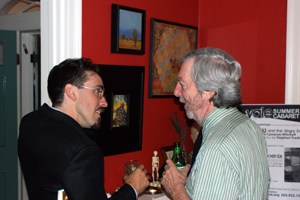

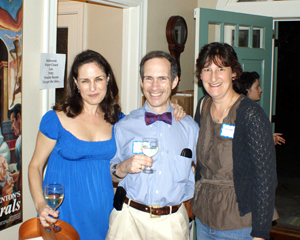




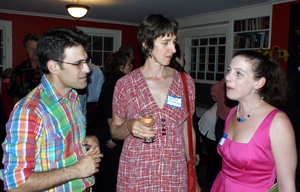
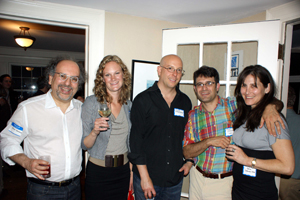
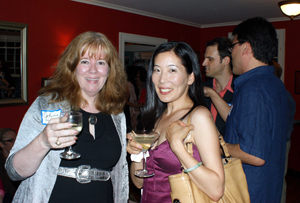


 The Long Wharf Theatre production of Henrik Ibsen's A Doll's House managed a surprising feat: it made the play more entertaining without significantly altering it. If you're a purist who wants to see Ibsen played straight, it does that; but if you think that a play like ADH, with its winsome wifey who gets into some hot water due to an "innocent" forgery, then gets out of it only to slam the door on her happy-ever-after home, is a bit dated and could use some kind of make-over, well, this show does that too.
The Long Wharf Theatre production of Henrik Ibsen's A Doll's House managed a surprising feat: it made the play more entertaining without significantly altering it. If you're a purist who wants to see Ibsen played straight, it does that; but if you think that a play like ADH, with its winsome wifey who gets into some hot water due to an "innocent" forgery, then gets out of it only to slam the door on her happy-ever-after home, is a bit dated and could use some kind of make-over, well, this show does that too.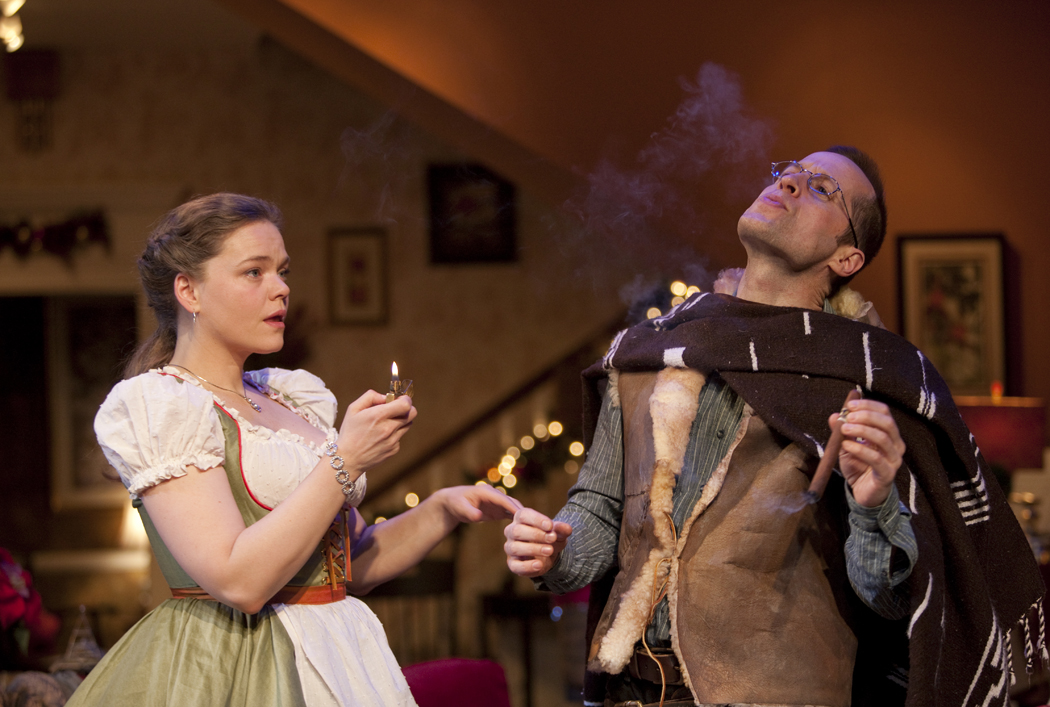
 Bernard-Marie Koltès' Battle of Black and Dogs (Combat de nègre et de chiens), translated by Michaël Attias, and directed by Robert Woodruff, is the second play this season at the Yale Rep to take us to vague environs in Africa to witness a drama among a small group of people cut off from the world at large. Like Danai Gurira's Eclipsed, BBD places us in a compound, but this time it's a "construction site run by a foreign company in a West African country, anywhere from Senegal to Nigeria," where the main characters, white and French, are confronted by Alboury (Albert Jones), a member of a local Wolof tribe who wants to retrieve the body of a worker at the site who has recently died or been killed.
Bernard-Marie Koltès' Battle of Black and Dogs (Combat de nègre et de chiens), translated by Michaël Attias, and directed by Robert Woodruff, is the second play this season at the Yale Rep to take us to vague environs in Africa to witness a drama among a small group of people cut off from the world at large. Like Danai Gurira's Eclipsed, BBD places us in a compound, but this time it's a "construction site run by a foreign company in a West African country, anywhere from Senegal to Nigeria," where the main characters, white and French, are confronted by Alboury (Albert Jones), a member of a local Wolof tribe who wants to retrieve the body of a worker at the site who has recently died or been killed.